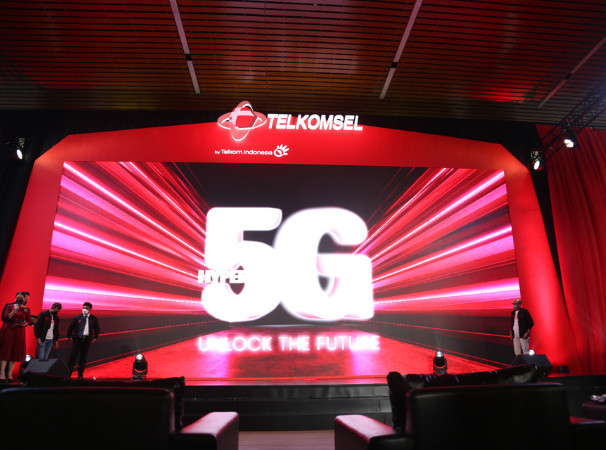Popular Reads
Top Results
Can't find what you're looking for?
View all search resultsPopular Reads
Top Results
Can't find what you're looking for?
View all search resultsTelkomsel launches first commercial 5G in Indonesia
Change text size
Gift Premium Articles
to Anyone
S
tate-owned telecommunication operator Telkomsel launched on Thursday the first commercial 5G service in Indonesia, thereby testing the market for such a premium data service.
Then Telkomsel president director Setyanto Hantoro said that, in the initial stage, 5G services would be made available in residential areas of Jakarta and South Tangerang given potentially high consumer demand for data services in those areas.
The 5G service would be available in Alam Sutera and Bumi Serpong Damai (BSD) in South Tangerang; Pantai Indah Kapuk (PIK) and Kelapa Gading in North Jakarta; as well as Pondok Indah and Kawasan Widya Chandra in South Jakarta, all of which are high-end residential areas.
“Our focus with the 5G deployment is to have an accessible digital solution for anyone. Soon, we will have several initiatives to develop our digital platform and services," he said in a press statement on Thursday.
The 5G network would also be available at Telkomsel Smart Office in Jakarta, the Bandung Institute of Technology (ITB), Telkom University in West Java and Telkomsel's branch offices in nine cities across the country.
Technology providers have been pushing the government to roll out 5G, a technology that has made its way into the 2020-2024 National Medium-Term Development Plan (RPJMN), even though local service providers have said the country has very few use cases for such high-speed connectivity at the moment.
Read also: Local telecom operators prepare for 5G networks
Setyanto identified enhanced video, high-definition music, cloud gaming and augmented and virtual reality as potential consumer services for 5G data. He said users in those areas could enjoy internet speeds of up to 750 megabits per second (Mbps) without changing their SIM cards.
However, experts have identified industries such as manufacturing, utilities and media as the crown jewel for 5G technology.
Read also: 5G to add $8b to telco revenue in Indonesia by 2030: Ericsson
Setyanto went on to say that the company’s 5G expansion was limited to the availability of base transceiver stations (BTS) that could support 2.3 gigahertz (GHz) frequencies.
Therefore, Telkomsel’s 5G networks still used the existing 4G infrastructure, a practice known as non-standalone (NSA) 5G.
“We opt for non-standalone 5G because we want to introduce 5G soon. Later, we will evolve and establish the standalone type, so that our 5G dreams can come true,” Setyanto said, as reported by Tribunnews.com.
Mobile operators who want to be the first to offer 5G usually implement NSA, while operators that prefer even lower network latency and higher capacity especially for enterprises would opt for standalone 5G.
Telkomsel first tested its 5G network during the 2018 Asian Games held in Jakarta and Palembang, South Sumatra.
Editor's note: This article was updated to reflect a leadership change at Telkomsel.










